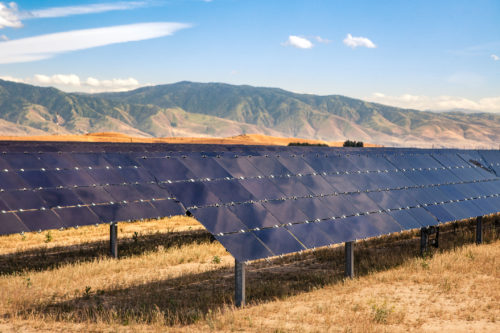
Achieving California’s ambitious clean energy goals will require a massive build-out of solar and wind power. E3 has estimated that 100 to 150 gigawatts (GW) of new renewable capacity – roughly three to five times current levels – will be needed to meet 2050 targets set by California’s Senate Bill 100. Siting decisions about these resources could put the state’s climate and conservation priorities at odds.
To understand how land constraints might impact the costs and technology choices of meeting California’s long-term climate goals, the nonprofit organization The Nature Conservancy (TNC) hired E3.
E3’s study modeled four levels of environmental protections for developing new solar, onshore wind, and geothermal resources across 11 Western states, as well as California’s ability and inability to access out-of-state renewables.
Using RESOLVE, its energy capacity planning model, E3 then built dozens of environmentally-constrained future electricity generation portfolios that all meet California’s long-term climate and energy goals: reducing economy-wide GHG emissions by 80% and delivering 102-110% retail sales of carbon-free electricity.
E3 found that incorporating land protections affects the balance of clean energy resources selected, primarily by reducing wind availability. It can also increase costs. The best-case scenario, for both costs and conservation, is one where California and other Western states access appropriately-sited renewables in a West-wide electricity market.
Report
Power of Place: Land Conservation and Clean Energy Pathways for California (PDF)
Media
Los Angeles Times, “California farmers are planting solar panels as water supplies dry up“
Grist, “Low on water, California farmers turn to solar farming“


